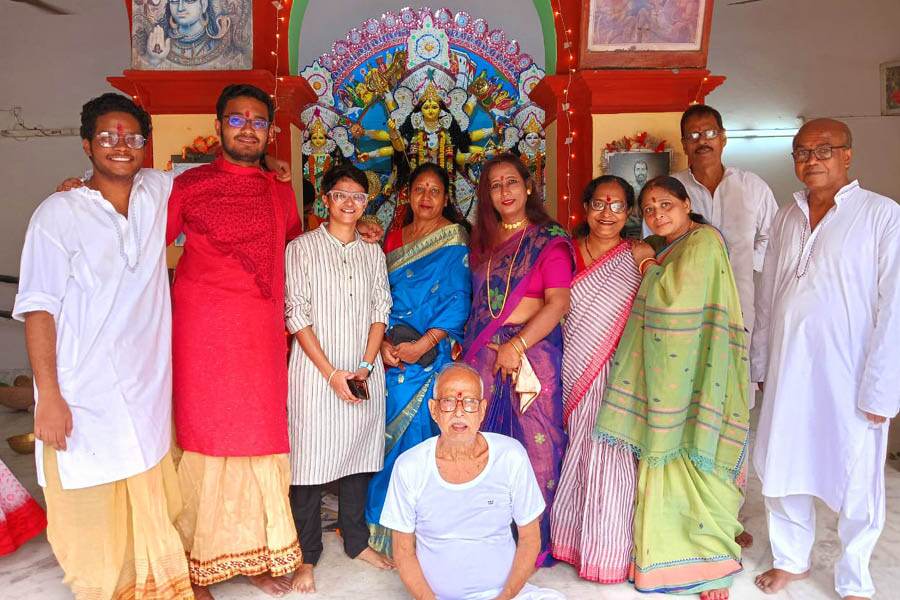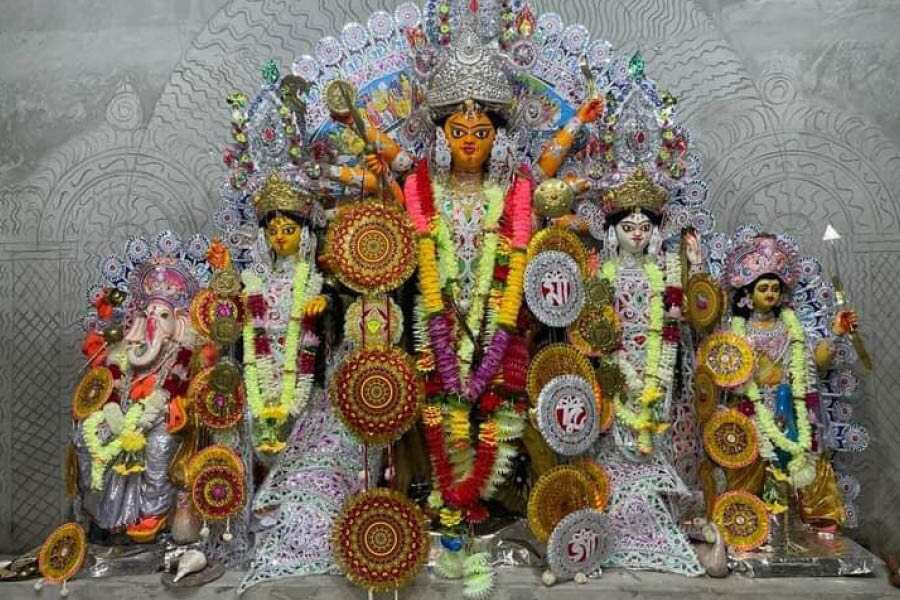In the late 17th century, around 1699, during the final years of the last mighty Mughal emperor Aurangzeb, a man named Kashinath Mitra, originally titled Roy, suddenly acquired a large jagir from the Mughal court in Delhi. It is believed that almost overnight, the family’s fortunes changed and they amassed a significant parcel of agricultural land on the banks of the Ganges in Hooghly, becoming wealthy zamindars.
The earliest known ancestor of this family was Kalidas Roy, who lived in the 10th century. The 18th generation after him was Kashinath, who pleased the Mughal court in Delhi and was granted jagirdari over fertile land in Bengal.
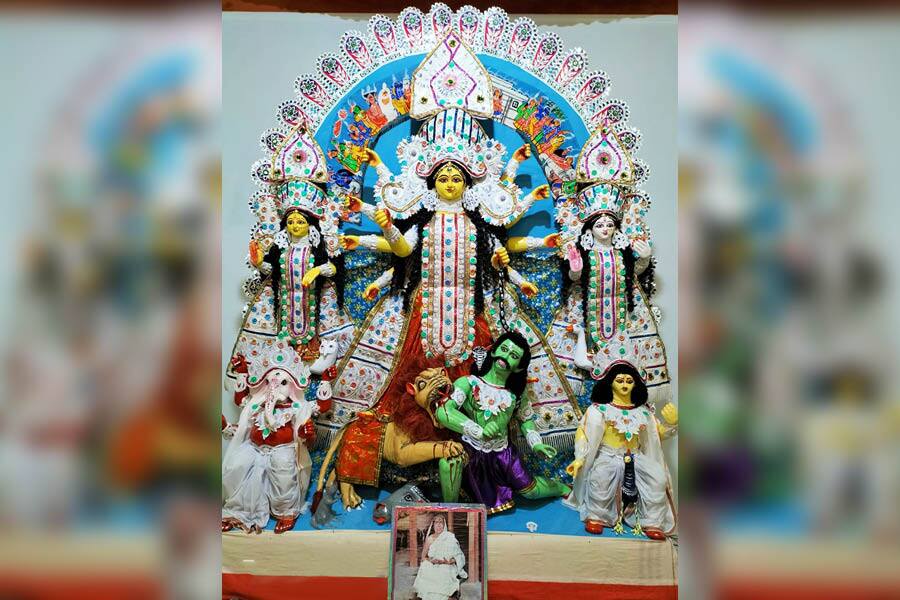
It is believed that Kashinath built a Durga dalan in Konnagar in the year 1700 and later constructed a Shiva temple in 1768
It is believed that Kashinath built a Durga dalan in Konnagar in the year 1700 and later constructed a Shiva temple in 1768. Although there is no tangible evidence available with the family, an old marble tablet found in the Durga dalan helped them trace one Raghunath Mitra, the 21st person in the same bloodline, who undertook the renovation of both the Durga dalan and the Shiva temple known as Buro Shib Mandir. Almost at the same time, a private crematorium named Gangabasir Ghar and an exclusive bathing ghat at the edge of the Ganga for females only, named Singhi ghat, were also built by the family. Also, there is another bathing ghat in Konnagar named Ramdhan ghat, which was also constructed by the family.
Thanks to the accumulation of more wealth later on by Digambar Mitra, this family became so wealthy that in the mid-1940s, when the Hind Motor automobile factory was built in Uttarpara, a large portion of that land was actually acquired from the Mitra family of Konnagar.
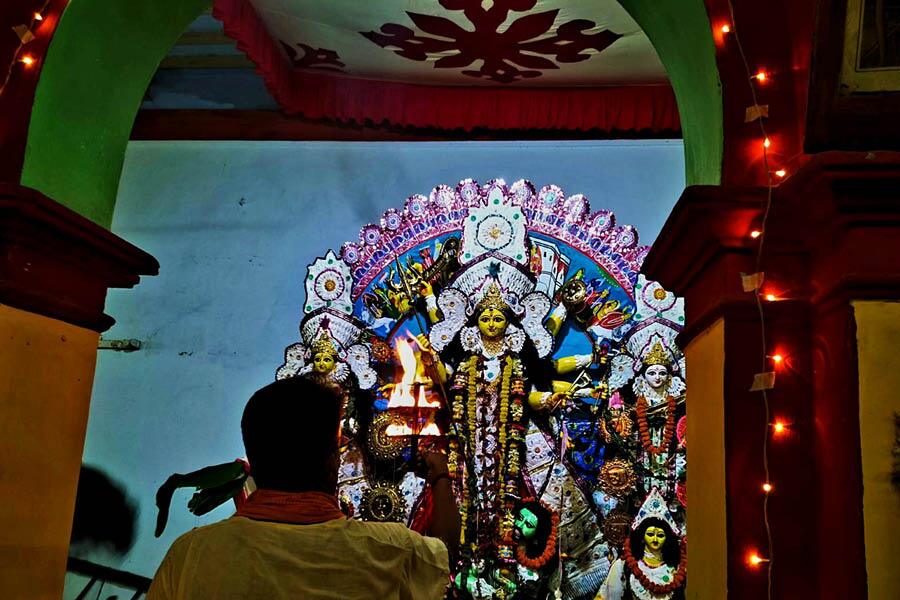
The idol is made at the Durga dalan of the family itself and its clay sculptors have been serving the family for generations. The name of the present sculptor is Biswajit Pal
The family claims that their puja is nearly 324 years old and that it has reached its zenith in large-scale celebrations over the last 150 years or so. Here, Devi is worshipped by the Shakta cult, but from the beginning, no animal sacrifice has ever been included in their process of invoking Durga as mother. The idol is made at the Durga dalan of the family itself and its clay sculptors have been serving the family for generations. The name of the present sculptor is Biswajit Pal, and Biswajit's father, Sudhir Pal, was also a regular idolmaker for this family.
To make the idol attractive, selected colours are applied to Durga and Lakshmi. Their skin is coloured bright yellow, while Mahishasura and Ganesh are painted green and red, respectively. Even Kartik is also painted bright yellow. All of these colours together enhance the brightness of the idol manifold.
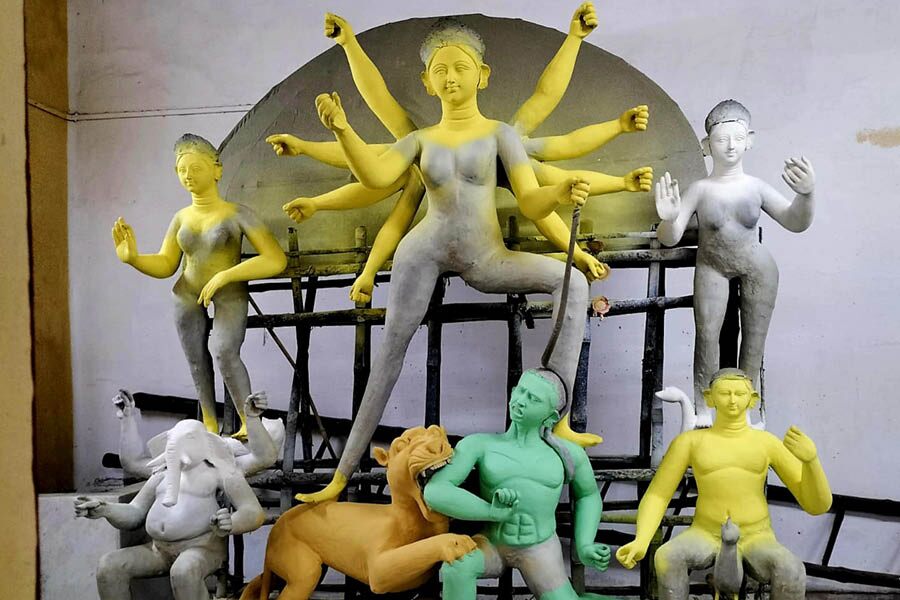
The kathamo (idol structure) is worshipped on the day of Rath Yatra
Like most family pujas, the kathamo (idol structure) is worshipped on the day of Rath Yatra, and the bodhan of the Devi is performed on the day of Sasthi.
One important exception of this puja is that the nabapatrika is not taken to any water body on the morning of Mahasaptami. Instead, it is bathed in the courtyard of the Durga dalan, where cloth walls are erected to ensure privacy during the ritual. Many years ago, it is believed that female members of the family wished for the nabapatrika not to be taken out to bathe in the Ganges among commoners.
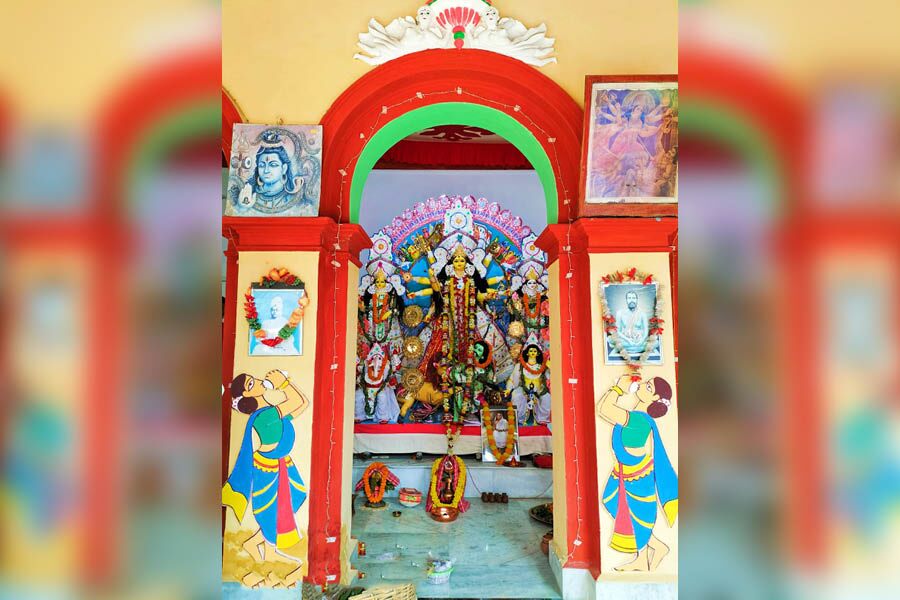
The puja is dedicated to the family deity, Baba Buro Shiv, the God enshrined in the ancient temple founded by one of their family members many centuries ago
Devi is offered annabhog, and she is not given any cooked food. The puja is dedicated to the family deity, Baba Buro Shiv, the God enshrined in the ancient temple founded by one of their family members many centuries ago.
Widows are allowed to participate in the puja, but they do not take part in sindoor khela during the immersion on Vijaya Dashami. Family members can consume non-vegetarian food during the puja, except on the day of Mahashtami. The idol is taken to the Singhi Ghat on the day of Dashami for visarjan.
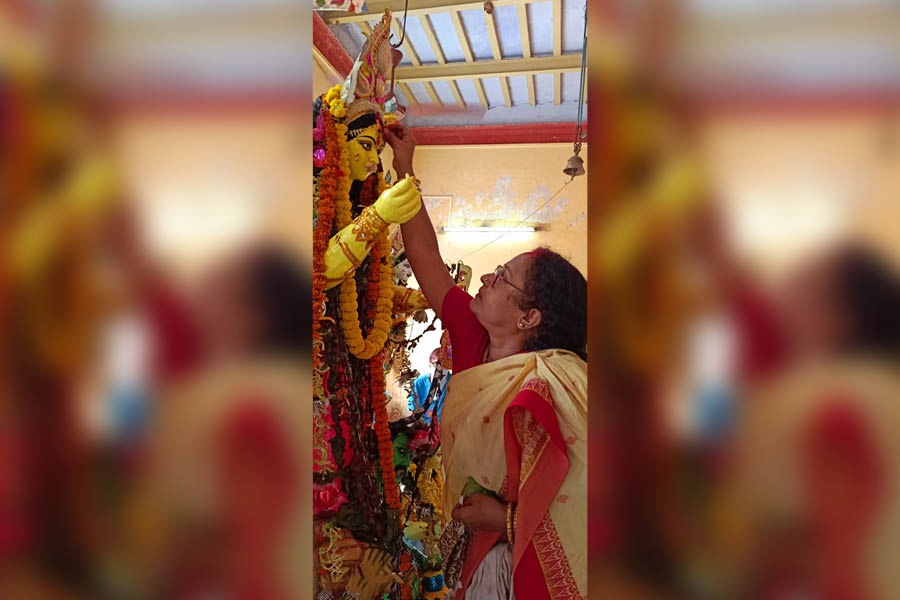
Widows are allowed to participate in the puja, but they do not take part in sindoor khela during the immersion on Vijaya Dashami
Generally, in every family and community, Kojagari Laxmi Puja is also performed four days after Vijaya Dashami. However, there is a curious exception in the Mitra family of Konnagar — no Laxmi Puja is performed after Durga Puja. When asked about the reason, Biswajit Mitra, one of the eldest family members, said that this is what he has observed from the beginning. Even his elder brother, Chandrajit Mitra, who is now in his 80s, has never seen any Laxmi Puja after Durgotsav.
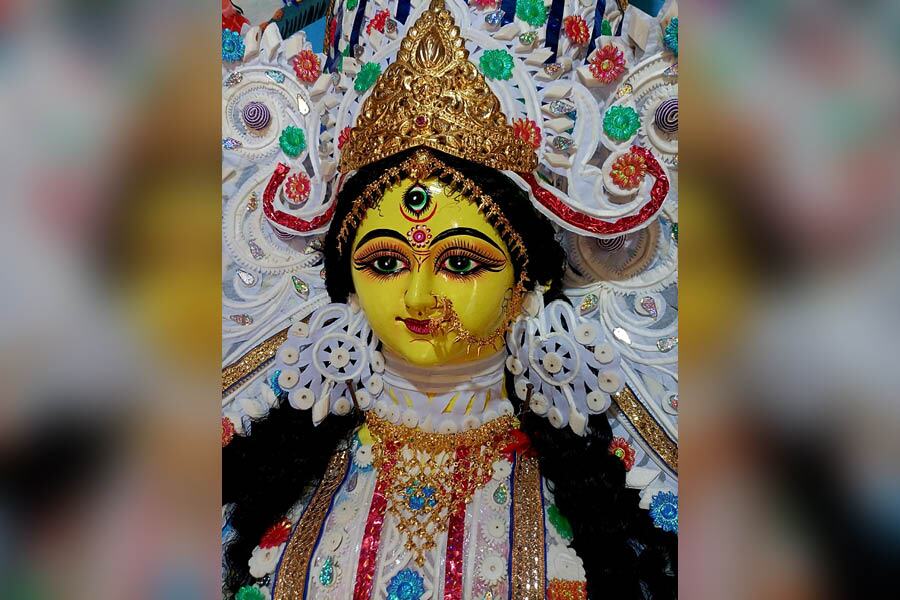
The idol is taken to the Singhi Ghat on the day of Dashami for visarjan
“The puja provides us a chance to meet all the family members for four days every year. Though many members fail to attend the festivities each year due to the demands of subsistence, we still have a considerable number of family members and friends during the Puja. My son, Snehojit, who is a student in Delhi, is here for the Puja,” said Biswajit Mitra, his eyes beaming with joy.
